Jack Butler Yeats RHA (1871-1957)
Near the Docks (1945)
Oil on panel, 23 x 35.5cm (9 x 14")
Signed
Provenance: Mrs F. Davenport, Surrey; With Waddington Galleries, London; Private Collection, Dublin
Exhibited: Limerick, Goodwin Galleries, Sept. 1945
Literature: Hilary Pyle, Jack B. Yeats: A Catalogue Raisonné of The Oil Paintings, Andre Deutsch, London 1992, Cat No. 687
This late work depicts two figures at a quayside with tall buildings and boats and water behind them. The man in the peaked cap is reminiscent of the figure of the Pilot who appears in many of Yeats’s paintings including the Pilot Sligo River (1927, Private Collection), A Misty Morning, (1943, Private Collection) and the early watercolour The River Pilot, (1900, Model Sligo). The figure in this painting appears younger and less stern than the Pilot, but his cap, necktie and dark blue jacket are all hallmarks of the famous figure. The old man who rushes past the sailor, recalls the figure of the artist himself, who is usually dressed in this formal fashion with hat and long coat. His stooped pose contrasts with the self-assurance and upright stance of the sailor. It is as if a chance encounter had sparked off a memory of Yeats’s youth and the heroic figure of the river pilot who featured so large in his childhood. As a boy, Yeats often travelled on the pilot boat up and down the Garavogue river, where his grandfather William Pollexfen was a merchant in Sligo town. The young boy lived with his grandparents in Charlemont House, overlooking Sligo harbour.
Near the Docks is one of several oils painted in 1945 that recall the ships and sailors of Sligo. Yeats was clearly remembering and thinking about this period in his life at the time. It is likely, given his focus on Sligo, that this work depicts the docks in the Western town. For another painting From the Old Pilot House, (1945, Private Collection) Yeats perused a sketchbook of 1902 in which he had drawn the Pilot house at Rosses Point.¹ He includes in the painting, an image of the Pilot gazing out to sea. The Pilot was crucial to the safe journey of merchant ships from the Atlantic to the docks in Sligo and his skill impressed the young Yeats who used him as a symbol of ingenuity and resolve throughout his subsequent career.
The right-hand side of the composition is closed off by the imposing block of a quayside warehouse while the lower and more varied buildings on the left allow daylight to dominate. The flowing water of the riverside is conveyed by the striated surface of the panel which Yeats uses to create rhythmic lines throughout the work. The proximity of water and architecture gives an almost Venetian quality to the left-hand side of the painting. Such liminal spaces between land and water were a rich source of inspiration to Yeats who relished their ambiguity and the direct interaction between solid and liquid form that they encapsulated. The strong light of day almost dissolves the buildings and their solid forms are conveyed largely through reflected light on the surfaces of their walls such as the deep blues and yellows of the warehouse or the rich orange and yellow of the smaller building to the left.
The two figures are sculpted out of thick pigment. The downcast head of the old man conveys his thoughtful expression despite the apparent anarchic arrangement of paint strokes. The face of the sailor is an astonishing passage of painting, with the fall of strong daylight from the left transforming the ear and chin into streaks of bright yellow. The left eye socket is in shadow and is molded out of purple paint. The application of pigment throughout the composition creates a sense of rapid movement and changing atmospheric effects. The chance encounter or memory that inspired Near the Docks is solidified by Yeats, in all its psychological and sensual intensity, through his remarkable handling of paint.
Róisín Kennedy, April 2023
Jack Butler Yeats RHA (1871-1957)
Near the Docks (1945)
Oil on panel, 23 x 35.5cm (9 x 14")
Signed
Provenance: Mrs F. Davenport, Surrey; With Waddington Galleries, London; Private Collection, Dublin
Exhibited: Limerick, Goodwin Galleries, Sept. 1945
Literature: Hilary Pyle, Jack B. Yeats: A Catalogue Raisonné of The Oil Paintings, Andre Deutsch, London 1992, Cat No. 687
This late work depicts two figures at a quayside with tall buildings and boats and water behind them. The man in the peaked cap is reminiscent of the figure of the Pilot who appears in many of Yeats’s paintings including the Pilot Sligo River (1927, Private Collection), A Misty Morning, (1943, Private Collection) and the early watercolour The River Pilot, (1900, Model Sligo). The figure in this painting appears younger and less stern than the Pilot, but his cap, necktie and dark blue jacket are all hallmarks of the famous figure. The old man who rushes past the sailor, recalls the figure of the artist himself, who is usually dressed in this formal fashion with hat and long coat. His stooped pose contrasts with the self-assurance and upright stance of the sailor. It is as if a chance encounter had sparked off a memory of Yeats’s youth and the heroic figure of the river pilot who featured so large in his childhood. As a boy, Yeats often travelled on the pilot boat up and down the Garavogue river, where his grandfather William Pollexfen was a merchant in Sligo town. The young boy lived with his grandparents in Charlemont House, overlooking Sligo harbour.
Near the Docks is one of several oils painted in 1945 that recall the ships and sailors of Sligo. Yeats was clearly remembering and thinking about this period in his life at the time. It is likely, given his focus on Sligo, that this work depicts the docks in the Western town. For another painting From the Old Pilot House, (1945, Private Collection) Yeats perused a sketchbook of 1902 in which he had drawn the Pilot house at Rosses Point.¹ He includes in the painting, an image of the Pilot gazing out to sea. The Pilot was crucial to the safe journey of merchant ships from the Atlantic to the docks in Sligo and his skill impressed the young Yeats who used him as a symbol of ingenuity and resolve throughout his subsequent career.
The right-hand side of the composition is closed off by the imposing block of a quayside warehouse while the lower and more varied buildings on the left allow daylight to dominate. The flowing water of the riverside is conveyed by the striated surface of the panel which Yeats uses to create rhythmic lines throughout the work. The proximity of water and architecture gives an almost Venetian quality to the left-hand side of the painting. Such liminal spaces between land and water were a rich source of inspiration to Yeats who relished their ambiguity and the direct interaction between solid and liquid form that they encapsulated. The strong light of day almost dissolves the buildings and their solid forms are conveyed largely through reflected light on the surfaces of their walls such as the deep blues and yellows of the warehouse or the rich orange and yellow of the smaller building to the left.
The two figures are sculpted out of thick pigment. The downcast head of the old man conveys his thoughtful expression despite the apparent anarchic arrangement of paint strokes. The face of the sailor is an astonishing passage of painting, with the fall of strong daylight from the left transforming the ear and chin into streaks of bright yellow. The left eye socket is in shadow and is molded out of purple paint. The application of pigment throughout the composition creates a sense of rapid movement and changing atmospheric effects. The chance encounter or memory that inspired Near the Docks is solidified by Yeats, in all its psychological and sensual intensity, through his remarkable handling of paint.
Róisín Kennedy, April 2023
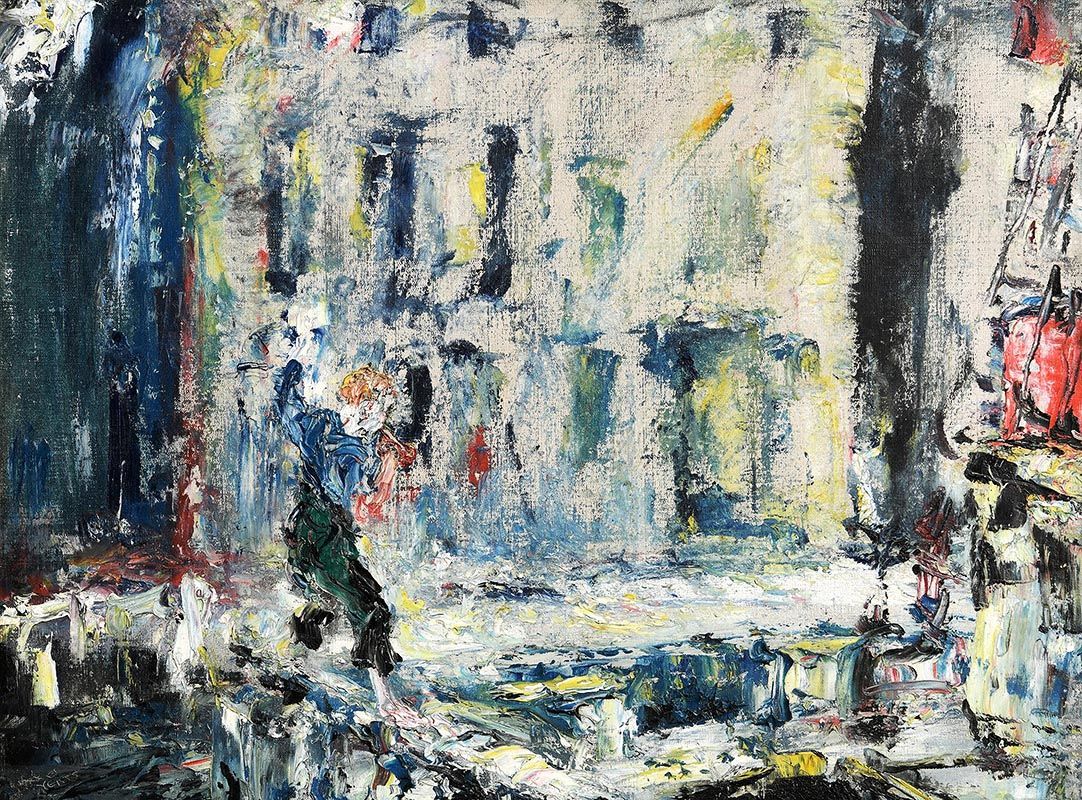
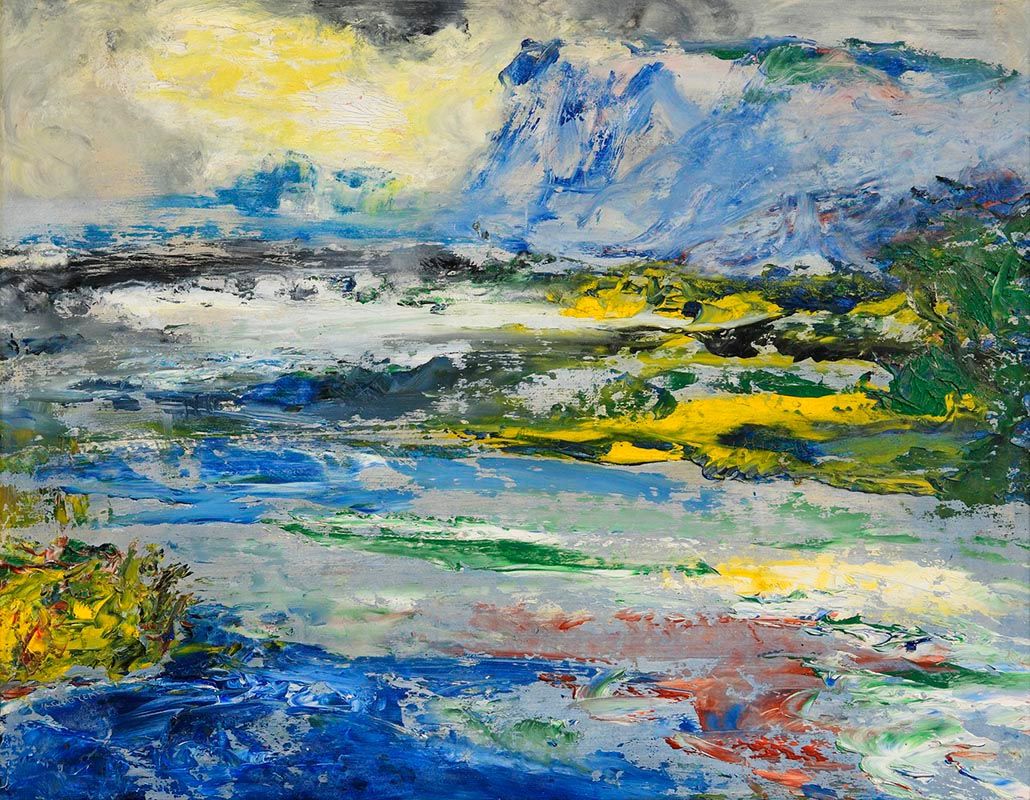
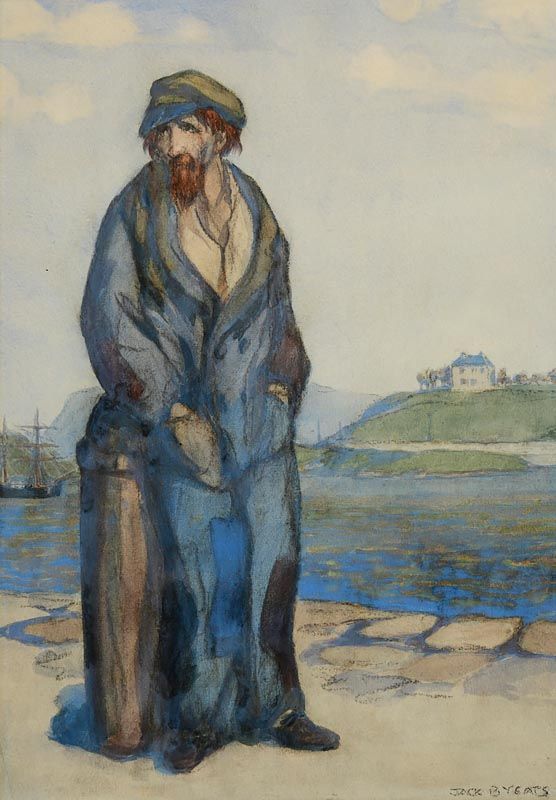

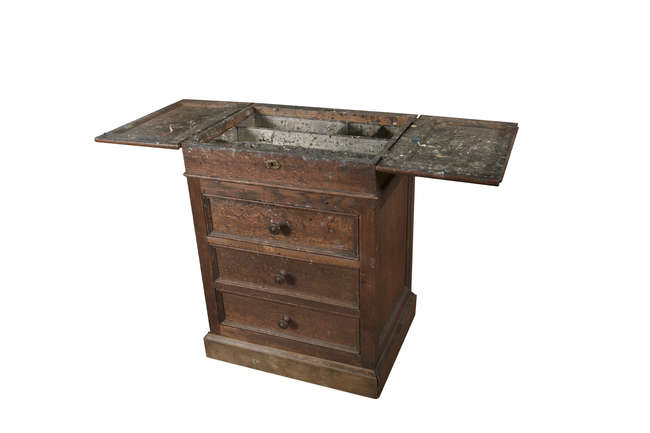
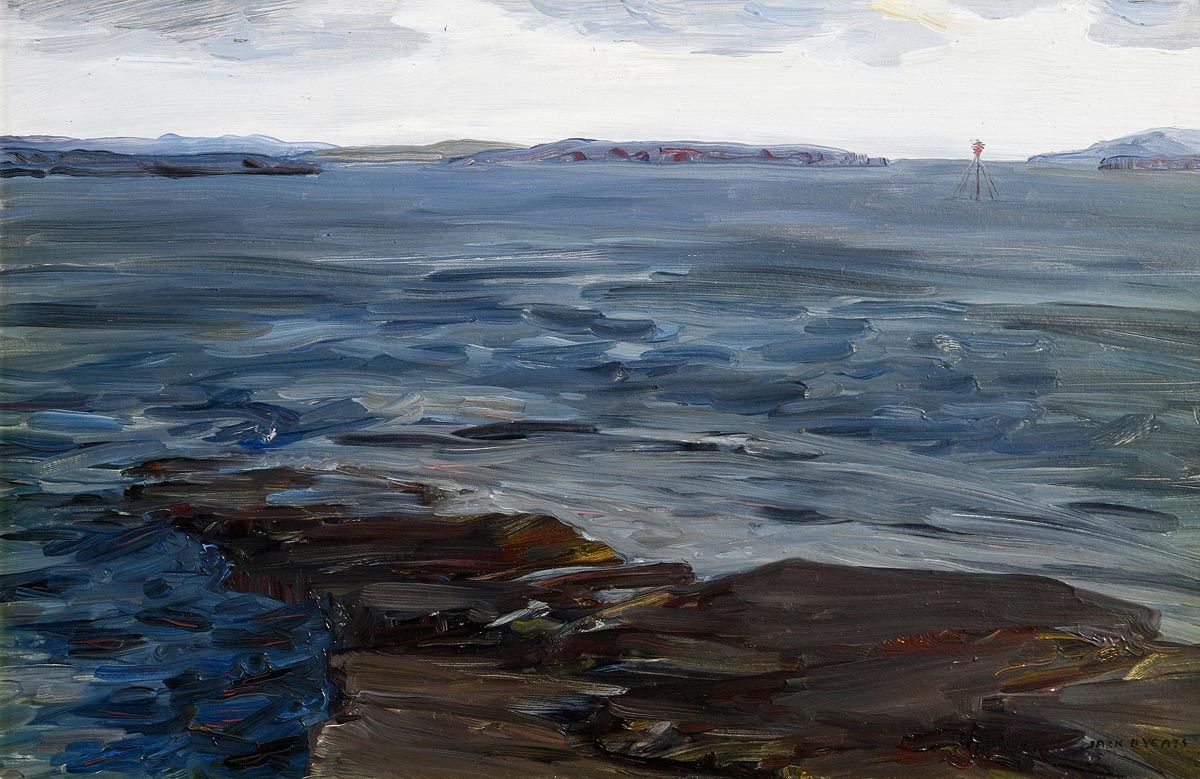
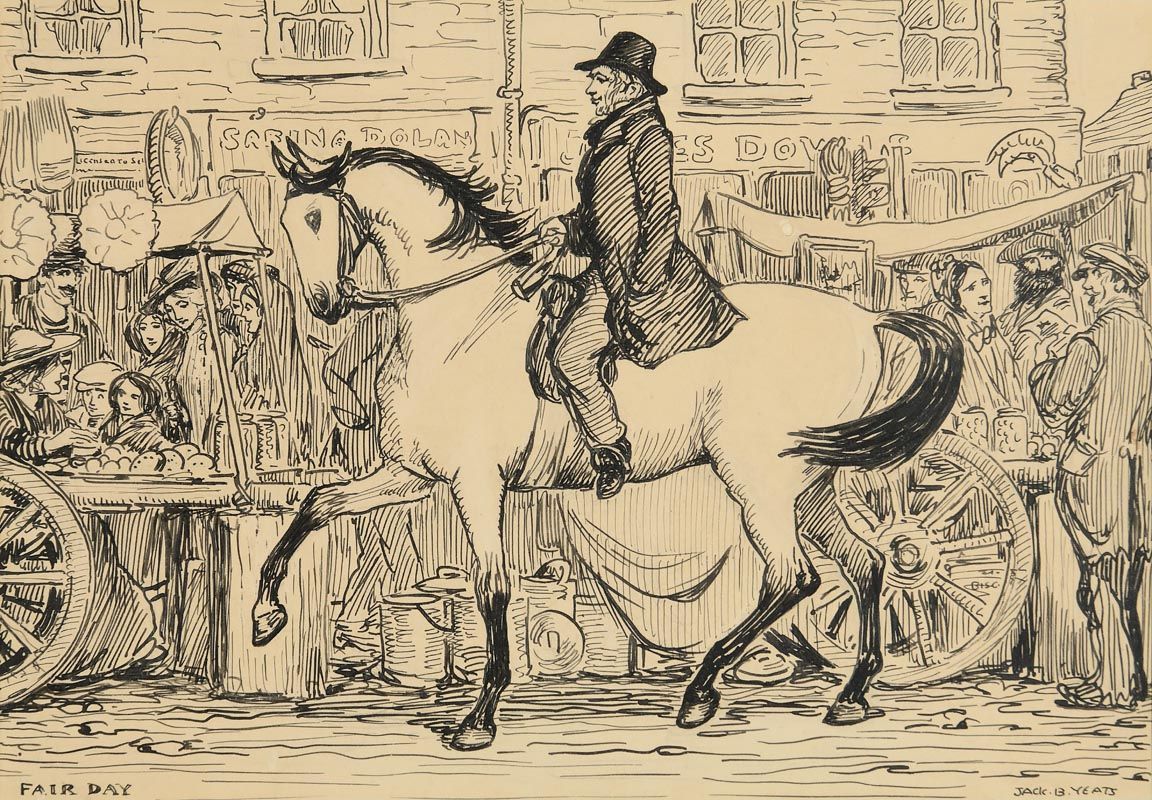
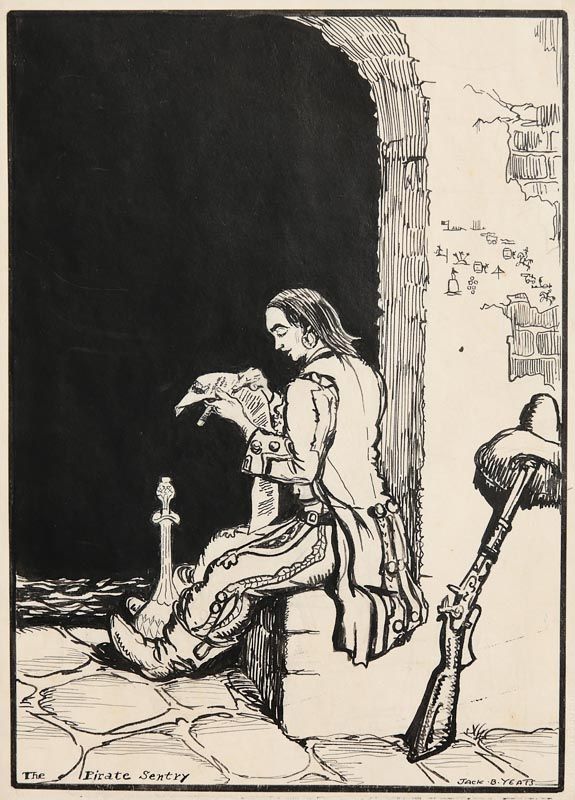


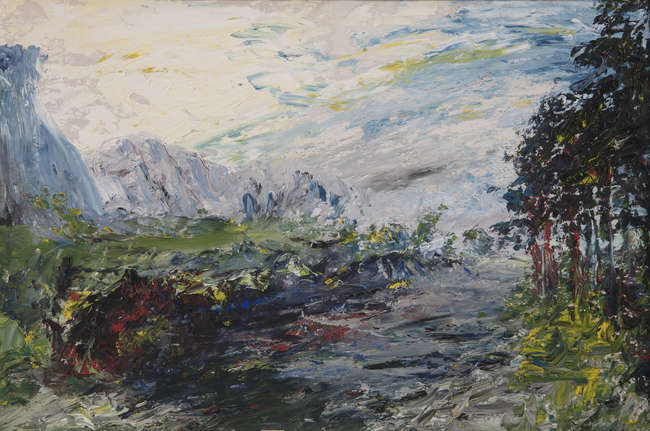
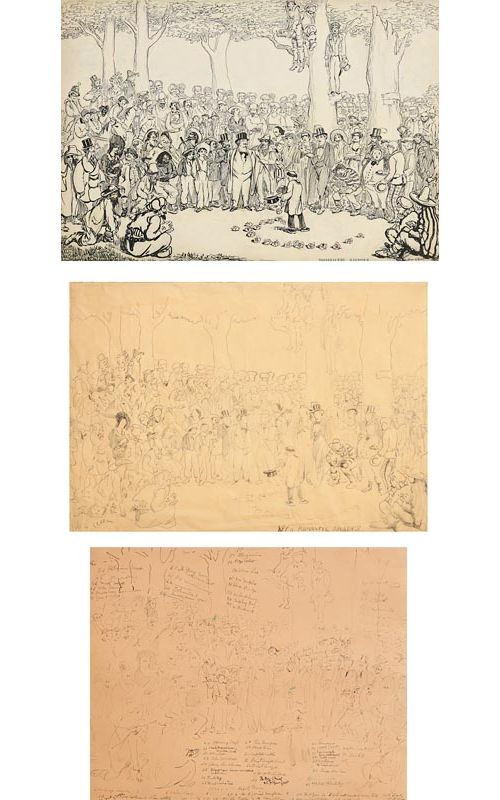
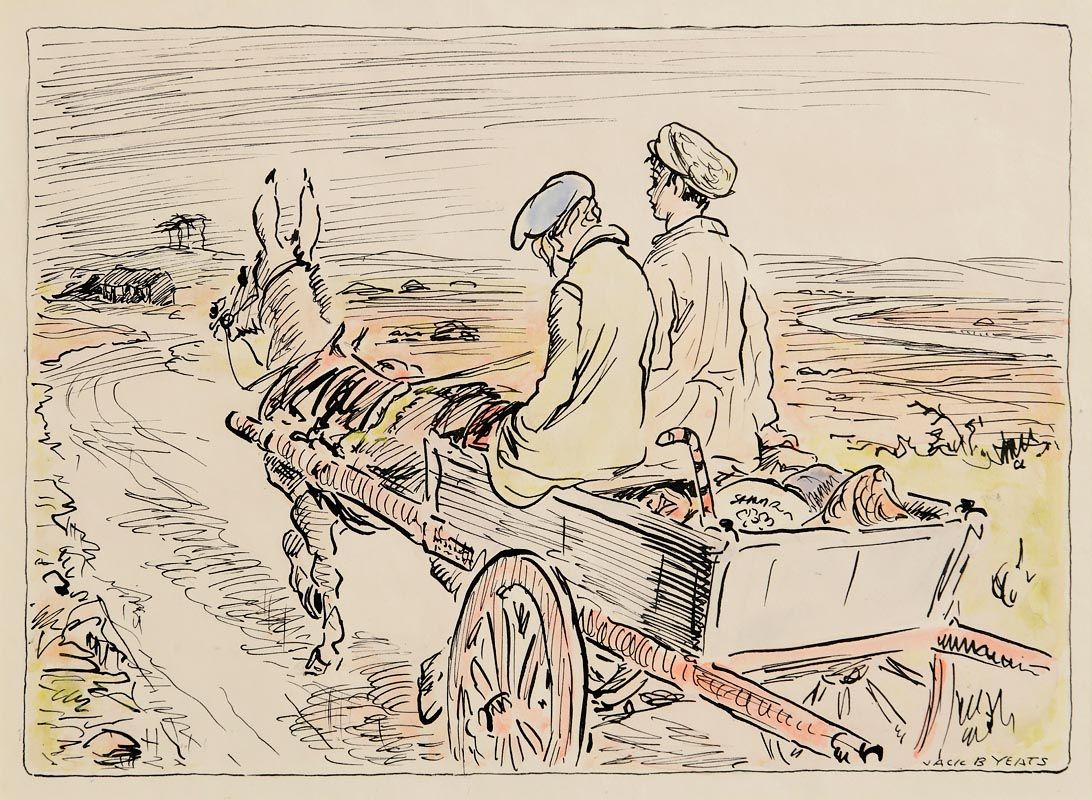

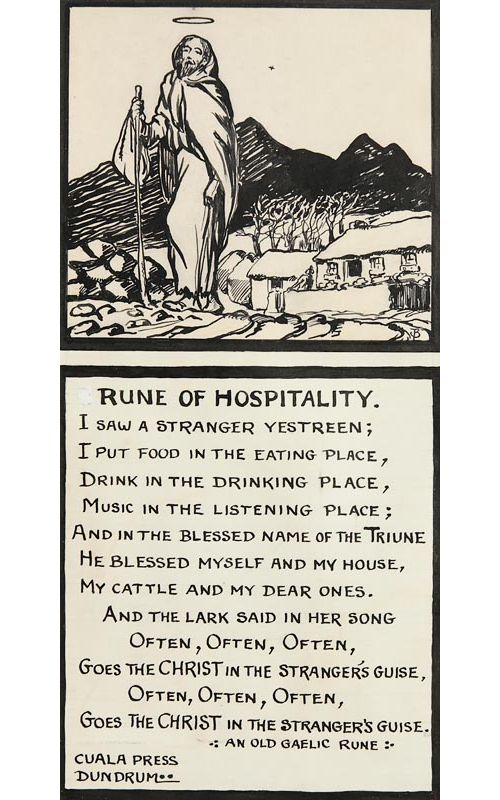
Testen Sie LotSearch und seine Premium-Features 7 Tage - ohne Kosten!
Lassen Sie sich automatisch über neue Objekte in kommenden Auktionen benachrichtigen.
Suchauftrag anlegen